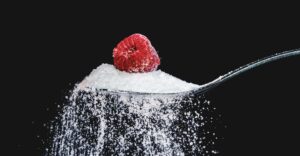In our modern connected world with all our technological improvements and evolution we have become a culture obsessed with becoming more efficient in every aspect of our lives.
From work to personal life and everything in between, we have become fixated on completing our tasks in the shortest and most efficient time possible. This is clear to see in industry, particularly in the tech sector, where we see Agile methodologies and rapid application development coming to the forefront of this industry in order to facilitate faster software development and delivery. [3]
With the global focus on doing everything faster and more effectively, we will now look at how we can achieve the same with our workouts and exercise routines. We will discuss how it is, not only possible, but highly beneficial to spend less time in the gym for our long term health and longevity.
While, as a culture, we have adopted the “efficient” lifestyle, I still see a huge lack of understanding about how to apply this mindset to our workout routines. I still see people spending hours upon hours running on treadmills at the same intensity thinking that this is the best and most effective way for aerobic, cardiovascular, muscular and mental health. The reason for this long held belief dates back to the 70’s and 80’s when the “running craze” swept through the fitness community. The “running craze” is another way of describing Black Hole Training.
“Black Hole Training is a nightmare exercise zone somewhere between a piece of cake and a Navy SEAL workout”[1]. Black Hole Training is essentially a heart rate zone that slightly exceeds your aerobic capacity. In this zone, you will be out of breath and will need to breathe through your mouth in order to continue with the exercise. You are now burning more glycogen and less fat for fuel. This is okay for about 10 minutes but after that you will begin to deplete your glycogen stores and the body will have to resort to breaking down lean protein in order to continue performing at this level. This is common in endurance runners, as the endorphin rush (Runners High), causes an adrenaline spike and the athlete will feel good even though they are running on an empty fuel tank and breaking down lean muscle tissue. Operating in this state will lead to a catabolic effect in your body. Do you think it is a coincidence that all elite level endurance runners are so thin and have so little lean muscle?
So, if running for long periods of time causes muscle breakdown and muscle wastage it should make sense that lifting weights for long periods should have the opposite effect. Right? In essence yes, but there are many more factors to consider before we hang up our running shoes for good.
Resistance training is highly beneficial for muscle building as we all know, but it is also very good for short term and long term fat burning. The more lean muscle you have the higher your resting metabolism is. Having a higher metabolism is associated with more efficient fat loss as having a high metabolism causes you burn more calories per day than someone with a slower metabolism.
Resistance training will also help to give a stronger base and structure, and having more lean muscle on your frame will improve the shape of your physique while helping to hide some of the existing fat on your body. Resistance training is also beneficial for hormone release which is directly correlated with feeling good. Similar to the Runner’s High mentioned above, it is also possible to get “high on the pump”. This phrase refers to the feeling we experience when our muscles swell with blood following resistance training. It is a wonderful feeling and can become quite addictive.
I have really sang the praises of resistance training above but as with everything, there are also some downsides. Low intensity resistance training is not very effective at improving cardiovascular and aerobic health and in some circumstances can cause problems with aerobic and cardiovascular health if excessive muscle causes blockages. We often hear of bodybuilders who have heart attacks or strokes later on in life. This is due to blockages in the system from years of anabolic training without taking into consideration the necessity for the occurrence of our natural catabolic capabilities. Excessive muscle can also cause problems with bones and joints, as the individuals joints, tendons and bones become tight from carrying such heavy weight around daily.
Also, I don’t particularly think swapping hours of treadmill running for hours of weight lifting is going to do anything to reduce the amount of time that we spend exercising every week.
We can see from the points above, that there are benefits and drawbacks to both long duration runs and long duration resistance training. With this in mind, I have a question for you:
How can we capitalize on the benefits of both resistance training and cardio while minimizing the negative effects of both?
Please welcome HIIT Resistance Training
High-Intensity Interval Training was a term coined after Dr. Izumi Tabata conducted a study on two groups to assess the difference between training intensities on aerobic fitness in 1996. [2]
- Control Group did 60 minutes of moderate-intensity exercise 5 times per week at 70% of the VO2 max.
- Other Group did high-intensity interval training with 20/10 sessions repeated 8 times at 170% VO2 max. 20 seconds of beyond maximum effort, followed by 10 seconds of rest.
The results of this study were quite astounding and have been summarized briefly below. Over the course of the 6 week study:
- Control group trained for 1800 minutes vs 120 minutes for the Other group
- The Control Group’s aerobic capacity didn’t improve significantly but the Other Group’s aerobic fitness improved by 28%!
“The study now known as the Tabata study, shows that high-intensity training is much more effective in inducing physiological adaptations and is a more efficient way of exercising”[1]
HIIT has been adopted heavily in professional sports and is particularly obvious in sports such as Track Sprinting and Martial Arts such as Muay Thai. HIIT sessions mimic real life scenarios and allow us to improve our aerobic efficiency and fitness while burning more fat, keeping our glycogen stores full and releasing feel good hormones into our system.
Now that we have an understanding of what HIIT is, let’s look at what exactly HIIT Resistance Training (HRT) is.
HRT is simply HIIT with added resistance training. We apply the same formula to our resistance sessions that we would to our cardio sessions. So if we take the rule of 20/10, the same as Dr.
Tabata, this would translate to 20 seconds of ultimate effort using some resistance, eg kettlebells, followed by 10 seconds rest. This would then be repeated between 8-10 times.
Because you are moving weights or working with resistance at a high intensity for a short duration of time you are working with an almost maximum heart rate for the duration of the 20-30 minute session. This means that not only are you getting all the benefits of cardio and aerobic improvements, you are also getting the array of benefits from resistance training such as increased strength, higher metabolism, fat loss, and increased aerobic threshold along with the serotonin and dopamine release to give you that feel good factor.
So now we have all the science and information needed to create a time-efficient, effective workout that will maximize our results while minimizing risk of injury, overtraining and burnout. And will only require 3 sessions a week lasting less than 45 minutes per session.
You could even squeeze your workouts in during your lunch break, and free up your evenings 🙂
Below is a sample HIIT Resistance circuit session that last less than 45 minutes. Take a look and see if it could work for you.
EXERCISE DURATION SET 1: SET 2: SET 3:
GOBLET SQUAT: 20s on/10s off
PLANK: 20s on/10s off
SHOULDER PRESS: 20s on/10s off
DUMBBELL LUNGE LEG RAISES: 20s on/10s off
LEG RAISES: 20s on/10s off
WIDE PUSH UPS: 20s on/10s off
JUMPING SQUATS: 20s on/10s off
MOUNTAIN CLIMBERS: 20s on/10s off
DUMBBELL ROW: 20s on/10s off
BURPEES: 20s on/10s off
Complete each exercise once before moving to the next exercise. Each exercise consists of 30 seconds of intense workout followed by 30 seconds’ rest. Use the rest period to get your breath back and to move to the next exercise.
- 1 circuit consists of completing the 10 exercises once each.
You will repeat the circuit three times in total, taking a 2-minute break in between each round of the circuit. The circuit is high intensity, low weight. So, choose light weights and aim for as many reps in the 30 seconds as possible. During the 2 minutes break do not sit down, instead walk around until the 2 minutes are up, this prevents oxygen pooling in the blood which is important.
Ensure you do at least 10 minutes warm up before starting the circuit, either light jogging, cycling or skipping. Just make sure you have a sweat on and are good and warm before jumping into the circuit.
After finishing the three rounds of circuits, do not sit down, instead walk around until your breathing has returned to normal, this prevents oxygen pooling in the blood and is important. Once your breathing is under control, jump on the treadmill, bike or skip VERY lightly for 5 minutes followed by a full body stretch to remove all lactic acid that has built up/ is building up after the session.
Want to learn more about health and fitness? Find a Health Coach near me.
Sources
- Metabolic Autophagy: Practice Intermittent Fasting and Resistance Training to Build Muscle and Promote Longevity — Siim Land
- https://www.ncbi.nlm.nih.gov/pubmed/8897392








